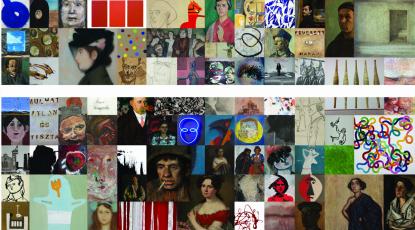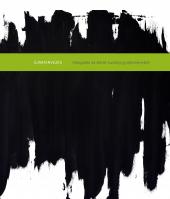2024. November 22. Friday
MODEM Modern and Contemporary Arts Centrer - Debrecen
|
|
Address: 4026, Debrecen Baltazár Dezső tér 1.
Phone number: (52) 322-207
E-mail: modem@modemart.hu
Opening hours: Tue-Wed, Fri-Sun 10-18
Thu 12-20 |
The exhibition has closed for visitors.
2015.07.10. - 2016.04.17.
Museum tickets, service costs:
|
Individual ticket for adults
|
1800 HUF
|
|
|
Individual ticket for students
|
900 HUF
|
|
|
Individual ticket for pensioners
|
900 HUF
|
|
|
Ticket for families
(2 adults + max 3 children)
|
3200 HUF
|
/ family
|
|
Individual combined ticket for adults
(valid for the MODEM + Déri Museum + Debrecen Literary Museum)
|
2000 HUF
|
|
|
Individual combined ticket for students
(valid for the MODEM + Déri Museum + Debrecen Literary Museum)
|
1000 HUF
|
|
|
Individual combined ticket for pensioners
(valid for the MODEM + Déri Museum + Debrecen Literary Museum)
|
1000 HUF
|
|
|
Combined ticket for families
(valid for the MODEM + Déri Museum + Debrecen Literary Museum, 2 adults + max. 3 children)
|
4000 HUF
|
/ family
|
|
Photography
|
2000 HUF
|
The first large-scale exhibition presented in new structure by MODEM Déri Museum is filling all three floors, as the title suggests, it wishes to show from a new perspective the greatest Hungarian private collection, or part of it. Over the past nine years, many art historians, curators could pick from the thousands of creation.

The exhibition begins on the ground floor with a portrait gallery which remind the visitors in effect of former aristocratic art galleries. There are a number of portraits found in the collection, thanks to the fact that the first half of the twentieth century - when the genre bloomed - is very richly represented in the collection. The portrait gallery features portraits of famous poets, painters, scientists, known or unknown friends and relatives in addition to portraits of anonymous people.
On the second floor of the works are divided into three main themes. The biggest section describes how in the XX-XXI. century art appeared great cultural traditions, such as the Judeo-Christian culture and the environment. The collection emphasises works of art of the Jewish tradition and also post-Christian iconography art. Some of these works can be considered sacred, the other part is built of the traditional elements of symbolic systems
The tradition sections is flanked by two abstract topics, in one time, in the another space provided the concept for the works. The main motive for the time session, and also its symbol was the clock. In addition to the clock works of art depicting passing of time are also displayed, which are often representations of a cemetery or objects reminding the viewers of grave stelas. Pictures of space are works that can be interpreted as world, works interpreting world.
While the ground floor compilation is built around a genre, portraits, the second-floor sections follow thematic issues, while the third floor evokes twentieth-century great adventure of imagery. Separation figurativity can be studied through representative national and international works of art.
The subsequent levels try to represent change in the collector's attitude also. Collecting art is a dialogue; collector and collection are in a continuous interacting with each other. With changes in the taste of the collector, the collection will also change, at the same time, works also continuously shape and form the collector's personality and world view.
The exhibition consisting of some 400 works of art selects of traditional genres of art (paintings, drawings, sculptures) in addition to installations and video works. Juxtaposition of folk art and visual give a more comprehensive picture of the collector's approach to art. The visitors will find interactive devices, while a separate section for kids museum is the place where they can learn more about the works of art.
Curator: Katalin Nagy T.

The exhibition begins on the ground floor with a portrait gallery which remind the visitors in effect of former aristocratic art galleries. There are a number of portraits found in the collection, thanks to the fact that the first half of the twentieth century - when the genre bloomed - is very richly represented in the collection. The portrait gallery features portraits of famous poets, painters, scientists, known or unknown friends and relatives in addition to portraits of anonymous people.
On the second floor of the works are divided into three main themes. The biggest section describes how in the XX-XXI. century art appeared great cultural traditions, such as the Judeo-Christian culture and the environment. The collection emphasises works of art of the Jewish tradition and also post-Christian iconography art. Some of these works can be considered sacred, the other part is built of the traditional elements of symbolic systems
The tradition sections is flanked by two abstract topics, in one time, in the another space provided the concept for the works. The main motive for the time session, and also its symbol was the clock. In addition to the clock works of art depicting passing of time are also displayed, which are often representations of a cemetery or objects reminding the viewers of grave stelas. Pictures of space are works that can be interpreted as world, works interpreting world.
While the ground floor compilation is built around a genre, portraits, the second-floor sections follow thematic issues, while the third floor evokes twentieth-century great adventure of imagery. Separation figurativity can be studied through representative national and international works of art.
The subsequent levels try to represent change in the collector's attitude also. Collecting art is a dialogue; collector and collection are in a continuous interacting with each other. With changes in the taste of the collector, the collection will also change, at the same time, works also continuously shape and form the collector's personality and world view.
The exhibition consisting of some 400 works of art selects of traditional genres of art (paintings, drawings, sculptures) in addition to installations and video works. Juxtaposition of folk art and visual give a more comprehensive picture of the collector's approach to art. The visitors will find interactive devices, while a separate section for kids museum is the place where they can learn more about the works of art.
Curator: Katalin Nagy T.

